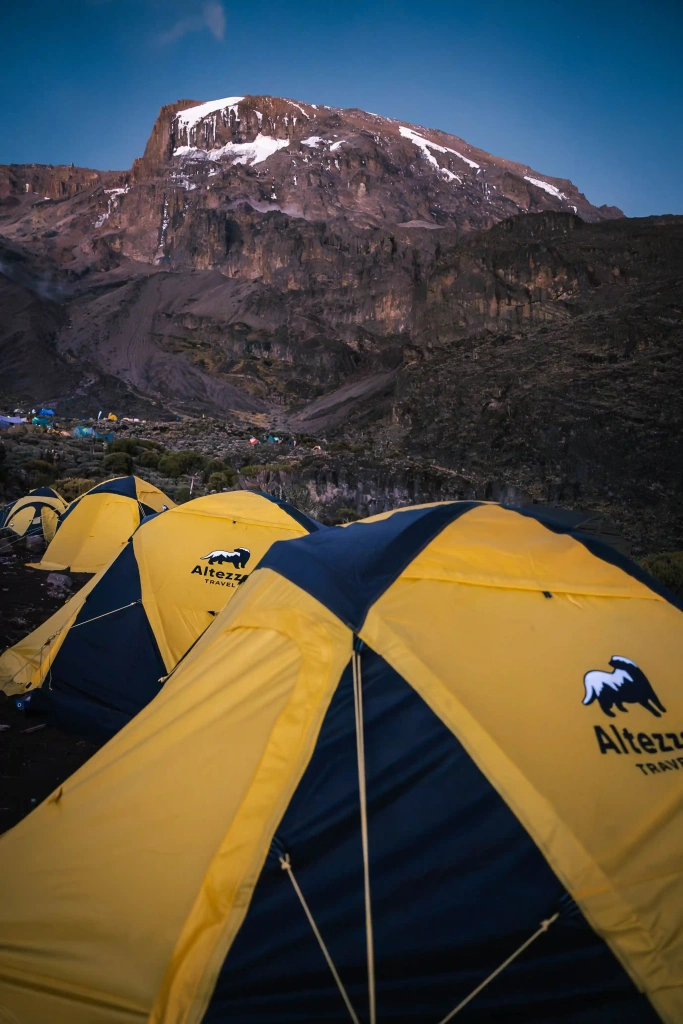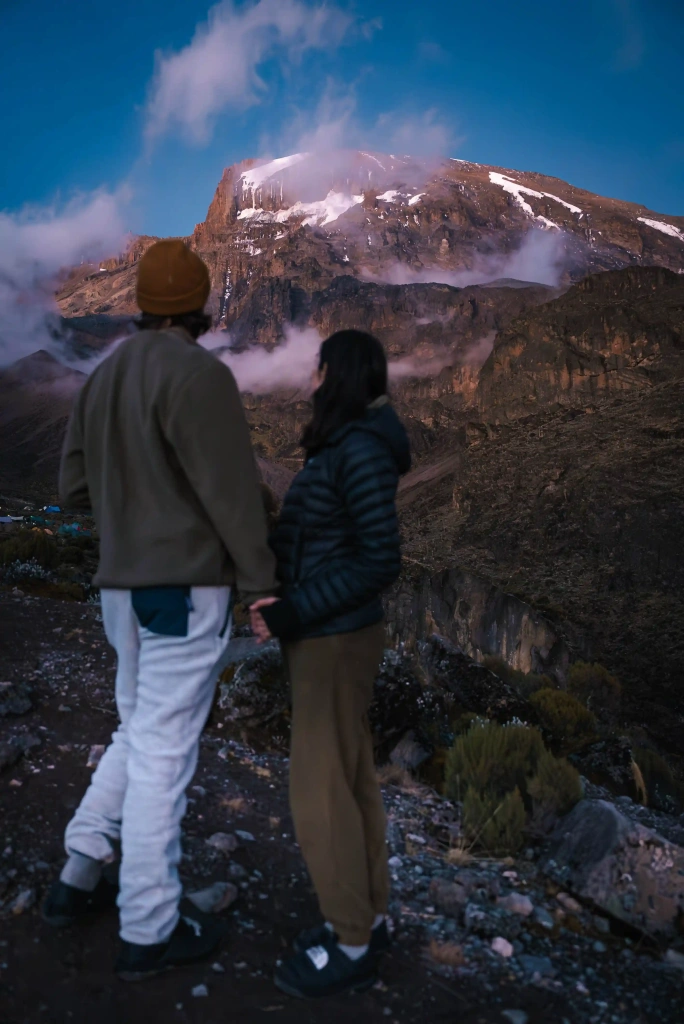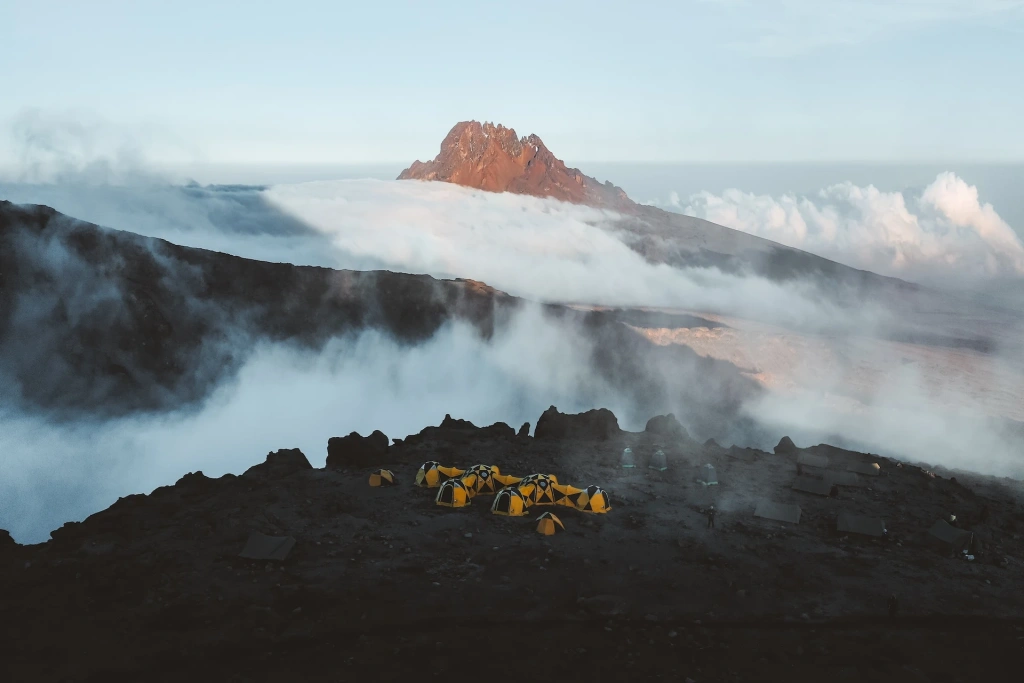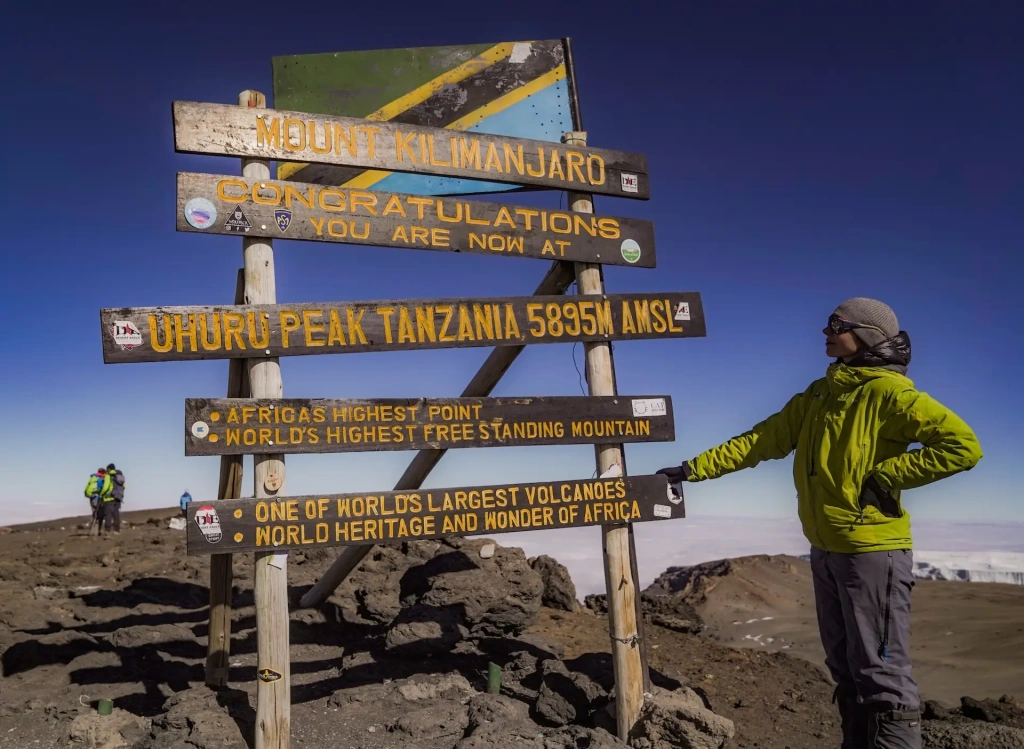Mount Kilimanjaro, Africa's tallest mountain, consists of three volcanic cones: Shira, Mawenzi, and Kibo. It began forming around 2 million years ago when molten lava began to break through the Earth's crust, triggered by tectonic plate movements. This created the first volcano, Shira. Today, Shira is extinct and eroded, with little left of it. Hundreds of thousands of years later, the volcanic cone of Mawenzi formed in a similar way, followed by Kibo, the third and youngest cone. The highest point on Kilimanjaro, Uhuru Peak, stands on Kibo. Its elevation is 5,895 meters (19,340 feet).
What caused the formation of Mount Kilimanjaro?
Mount Kilimanjaro is located in the , where the Nubian and Somali tectonic plates (both subdivisions of the African Plate) diverge beneath the African continent. Millions of years ago, the African Plate was a single plate, but due to rifting processes, it split into smaller plates over time.
Mount Kilimanjaro formed in the southern part of the Rift Valley. The giant tectonic plate split into two, and its pieces began to move apart, a process called rifting. The Earth's crust weakened at the rift, and fiery magma from beneath the Earth's surface broke through. Layer by layer, it formed the massive Shira volcano. It is worth noting that most of the mountains in the East African Rift system have a similar volcanic origin, and this is most likely how the Kilimanjaro was born.
The first volcano was believed to have been active for about 250,000 years. It is now destroyed. The average height of the Shira plateau is 3,600 meters (11,811 feet). Its highest point, Jonsell Point, is 3,962 meters (12,996 feet) above sea level.
The next volcano to form was Mawenzi, whose main summit today reaches 5,149 meters (16,892 feet) and is named after Hans Meyer, a German geology professor and traveler who became the first European to conquer Uhuru Peak. Initially, Meyer named the highest point of Kilimanjaro "Kaiser Wilhelm Peak" in honor of the German Emperor, but the name was later changed to Uhuru Peak after Tanzania gained independence.
The Kibo volcano is estimated to have formed from an eruption around 460,000 years ago. It is the only peak on Kilimanjaro that is covered with glaciers. Today, Kibo is the highest and largest of Kilimanjaro's three volcanic cones, measuring over 24 km (15 mi) at the Saddle Plateau altitude.
Thus, Mount Kilimanjaro is made up of three volcanoes. Shira has become a flat plateau, and the remaining edge of its volcanic crater has sunk deep into the earth. Mawenzi, the second "brother," is a rocky formation with steep slopes, making some areas nearly inaccessible for climbing. Kibo, the youngest volcano, also contains the mountain's highest point, known today as Uhuru Peak. This is the primary destination for adventurers aiming to climb Mount Kilimanjaro. It can be reached via one of Kilimanjaro's routes.
Geology of Mount Kilimanjaro
The "Roof of Africa" is volcanic in origin and mostly made of rock, lava, and ash. The summit contains a lot of andesite, a type of magmatic rock. However, the bulk of the mountain is composed of basalt, which forms lava when heated. This volcanic rock is dark gray, which is why Kilimanjaro looks like a dark tower with a white cap at the top.
On the slopes of Mount Kilimanjaro's Kibo volcano, you'll find a significant amount of obsidian — a unique volcanic rock that forms when molten lava flows cool too rapidly, preventing the development of a crystalline structure. As a result, the surface becomes covered with a smooth, solid substance that resembles black glass.
Is Mount Kilimanjaro an active volcano?
Of the three peaks of Kilimanjaro, only Kibo — the youngest volcano — is still considered potentially active. Officially, it is classified as dormant, not extinct. The likelihood of a Mount Kilimanjaro eruption in the near future is extremely low.
When did Mount Kilimanjaro last erupt?
Mount Kilimanjaro last erupted around 360,000 years ago and has been dormant since. However, fumaroles near the summit still release gases like sulfur dioxide and carbon dioxide, indicating ongoing geological activity.
What does the name Kilimanjaro mean?
One popular theory is that the name ”Kilimanjaro” comes from the Swahili words "kilima" (mountain) and "njaro" (whiteness or shining), which could translate to "Mountain of Whiteness" or "Shining Mountain," referencing the snow-covered peak. Another theory ties the name to the Chagga people, who inhabit the slopes of the mountain. Some suggest the name may have come from the Chagga word "Kilimanjaro," which could mean "mountain of caravans," referencing the trade routes that passed through the region. For more information about the origins of Kilimanjaro’s name, refer to our blog post.
All content on Altezza Travel is created with expert insights and thorough research, in line with our Editorial Policy.
Want to know more about Tanzania adventures?
Get in touch with our team! We've explored all the top destinations across Tanzania. Our Kilimanjaro-based adventure consultants are ready to share tips and help you plan your unforgettable journey.



















